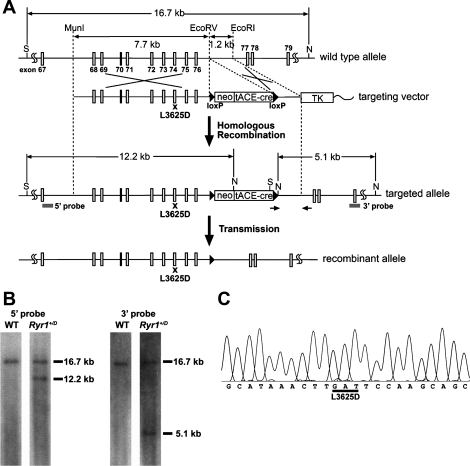Fig. 1.
Generation of mice with an L3625D mutation in the calmodulin (CaM)-binding site of ryanodine receptor 1 (RyR1). A: schematic representation of the mouse Ryr1 gene and targeting construct. S and N represent SpeI and NdeI restriction enzyme sites, respectively. neo, tACE-cre, and TK denote neomycin-resistant gene, Cre recombinase gene driven by testis-specific angiotensin-converting enzyme promoter, and thymidine kinase gene, respectively. Arrows and “x” indicate the position of primers for screening and a mutation site, respectively. B: southern blot analysis of genomic DNA. After restriction enzyme digestion of genomic DNA with SpeI and NdeI, 5′- and 3′-probes identify 12.2-kb and 5.1-kb fragment in targeted allele, respectively. Both probes hybridize with 16.7-kb fragments in wild-type (WT) allele. C: sequence analysis of RT-PCR. cDNA encoding CaM-binding site of RyR1 was amplified from total RNA from homozygous (hybrid genetic background) mouse skeletal muscle and sequenced. The L3625D mutation was confirmed. A HinfI site created by the L3625D mutation (GATTC) was used for screening the mutant allele.

